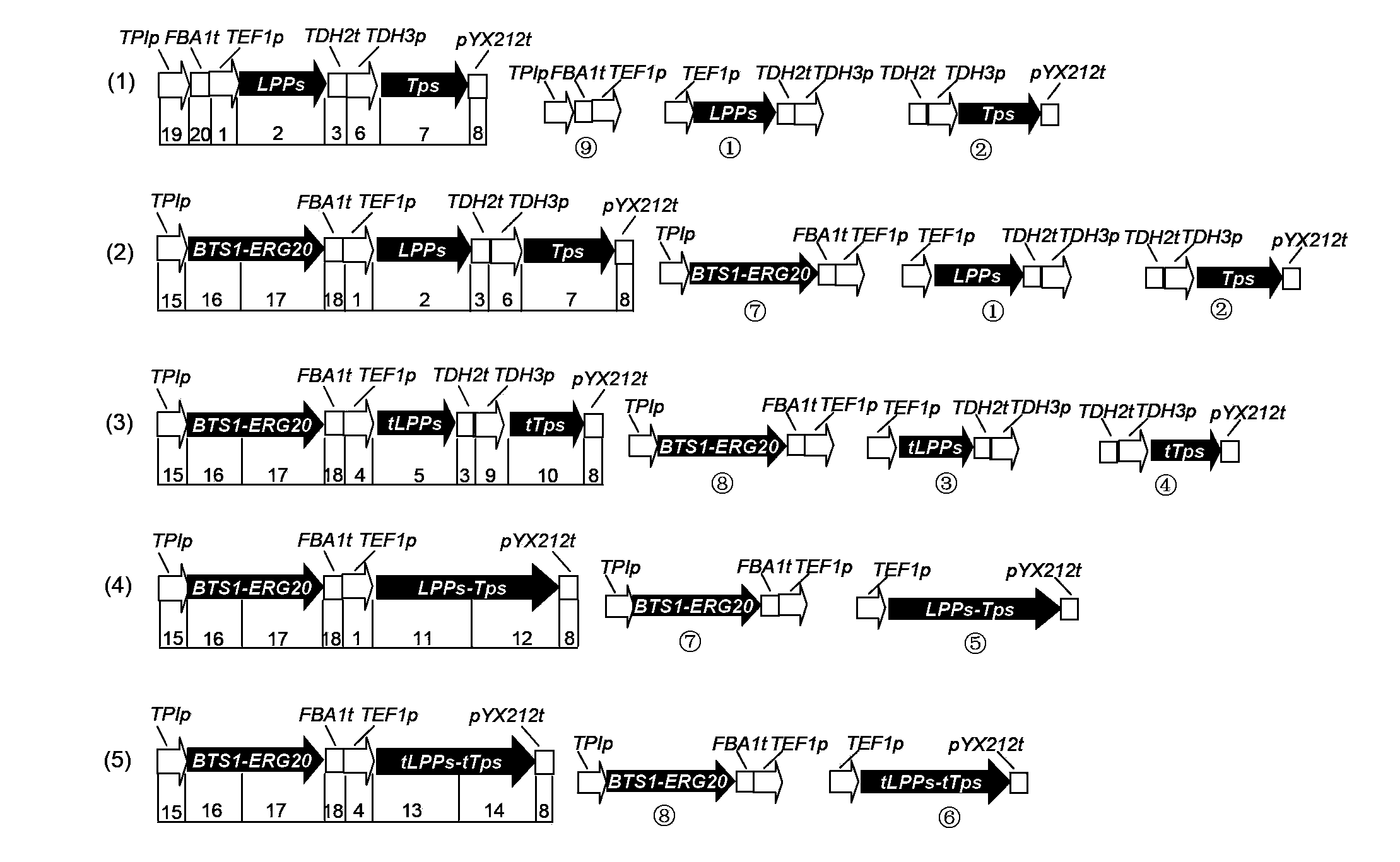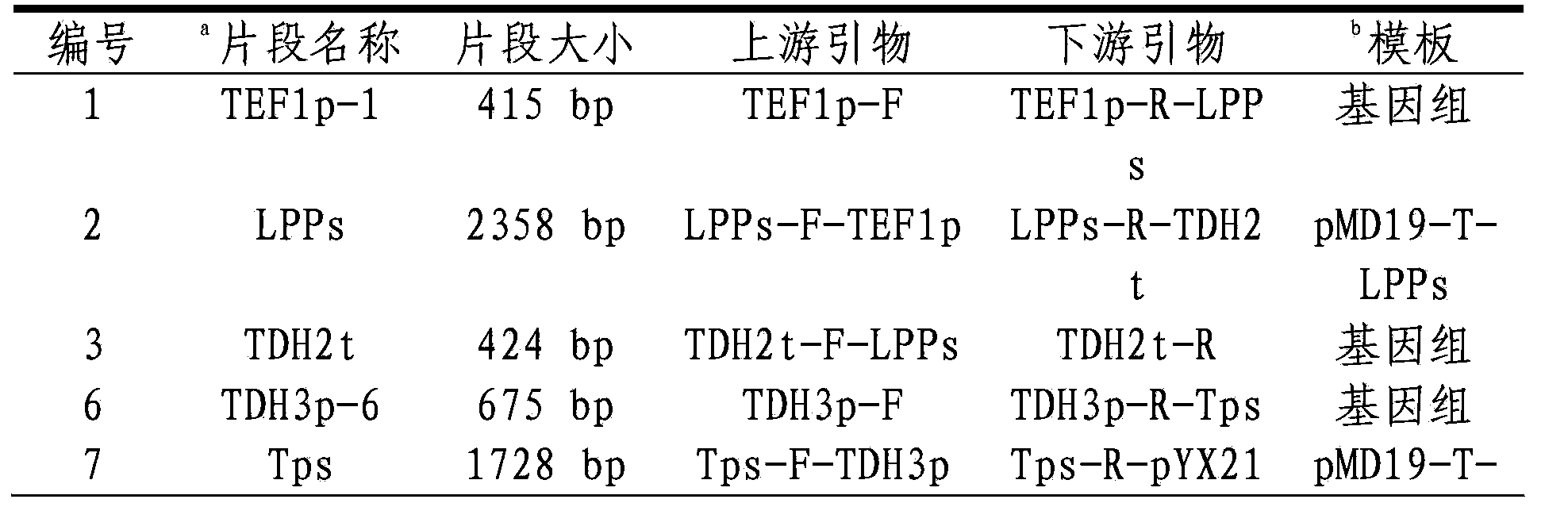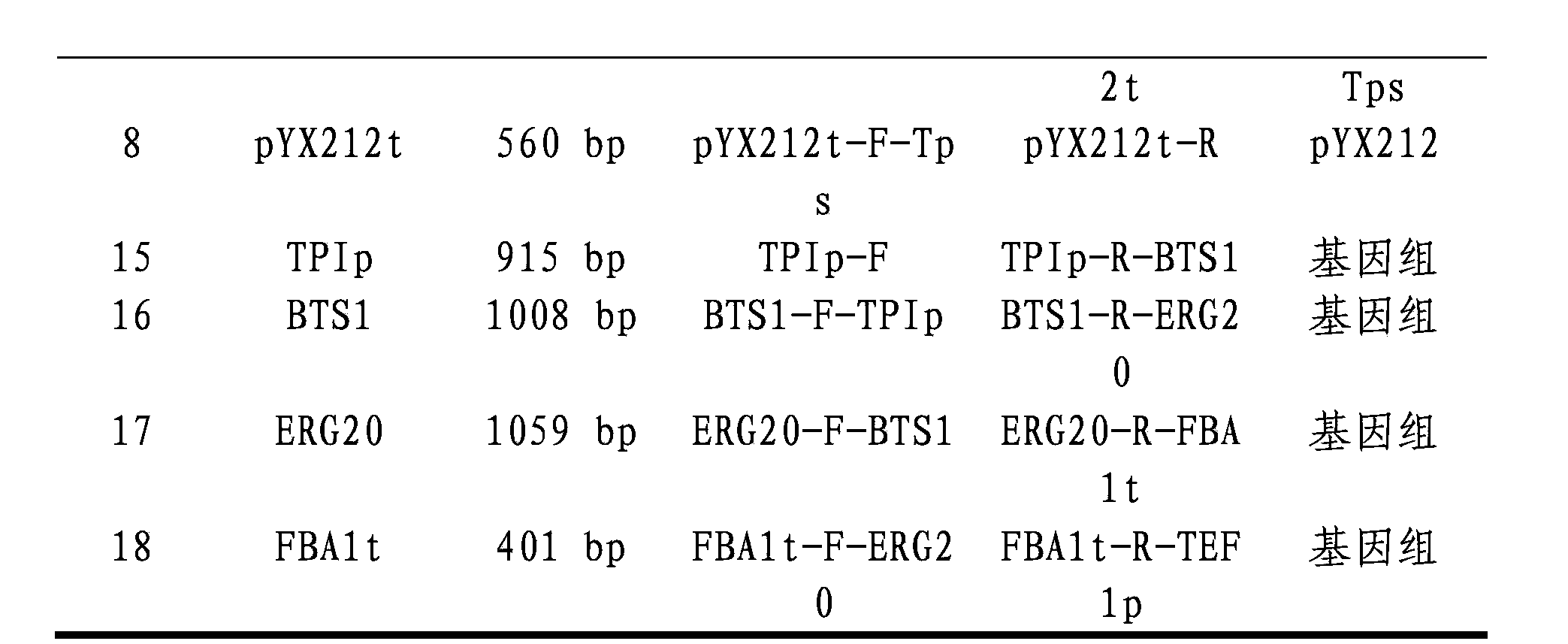Construction method for high-yield sclareol strain
A technology of sclareol and its construction method, which is applied in the field of construction of high-yield sclareol strains, can solve problems such as not fully satisfying industrialized production, long growth cycle of plant sclareol, etc., and achieve the effect of high-efficiency production
- Summary
- Abstract
- Description
- Claims
- Application Information
AI Technical Summary
Problems solved by technology
Method used
Image
Examples
Embodiment 1
[0029] Whole Gene Synthesis of LPP Synthase and Sclareol Synthase
[0030] The protein sequences of LPP synthase and sclareol synthase of the plant Sclareus are derived from the patent (WO.Pat.NO.2009101126-A1) written by Schalk of Fumenisher Co., Ltd., Geneva, Switzerland. Utilize codon-optimized sites ( http: / / www.jcat.de / Start.jsp ), the genes of LPP synthase and sclareol synthase were designed according to the codon preference of Saccharomyces cerevisiae, and the optimally designed gene sequences were different from those in the Schalk patent, with differences of 23.92% and 23.50% respectively , see sequence 1 and sequence 2 for the specific sequence. The whole gene synthesis of LPP synthase and sclareol synthase was carried out by TaKaRa Company, and the numbers are CBG747 and CBG748 respectively.
[0031]The specific process of whole gene synthesis is as follows: First, synthesize 50-100nt single-stranded small fragment DNA according to the gene sequence, and splicing...
Embodiment 2
[0034] Production of Sclareol by Recombinant Strain S2
[0035] Recombinant strain S2 is a strain that co-overexpresses LPP synthase and sclareol synthase and overexpresses fusion FPP synthase and GGPP synthase, see figure 1 (2), its construction process is as follows. First, using the Saccharomyces cerevisiae genome or plasmid as a template, clone promoters (TEF1p-1, TDH 3p-6 and TPIp-1), terminators (TDH2t, pYX212t and FBA1t-1) and gene sequences (LPPs, Tps, BTS1 and ERG20), detailed information is shown in Table 1; secondly, the cloned DNA fragments were connected by fusion PCR method (Yue et al., 2004, Fungal genetics and biology. 41: 973-981). Among them, the fusion PCR method is divided into two rounds of PCR reactions, the first round is according to the combination of fragments in Table 2, a: 1 (35ng), 2 (450ng), 3 (100ng) and 6 (35ng); b: 3 (40ng ), 6(140ng), 7(500ng) and 8(40ng); c: 15(40ng), 16(140ng), 17(140ng), 18(100ng) and 1(40ng), respectively added to the PC...
Embodiment 3
[0067] Production of Sclareol by Recombinant Strain S3
[0068] Recombinant strain S3 is a strain that co-overexpresses truncated LPP synthase and truncated sclareol synthase and overexpresses fusion FPP synthase and GGPP synthase, see figure 1 (3), its construction process is basically the same as that of strain S2, the difference is that LPP synthase and sclareol synthase are truncated genes that remove the N-terminal part of the sequence, wherein the sequence length of the N-terminal truncated Referring to Schalk's patent (WO.Pat.NO.2009101126-A1), LPP synthase and sclareol synthase are truncated by 63aa and 50aa, respectively.
[0069]First, using the Saccharomyces cerevisiae genome or plasmid as a template, clone promoters (TEF1p-1, TDH3p-6 and TPIp-4), terminators (TDH2t, pYX212t and FBA1t-1) and gene sequences (tLPPs, tTps, BTS1 and ERG20 ), detailed information is shown in Table 4; secondly, the cloned DNA fragments were connected, and the method of fusion PCR was ado...
PUM
 Login to View More
Login to View More Abstract
Description
Claims
Application Information
 Login to View More
Login to View More - R&D
- Intellectual Property
- Life Sciences
- Materials
- Tech Scout
- Unparalleled Data Quality
- Higher Quality Content
- 60% Fewer Hallucinations
Browse by: Latest US Patents, China's latest patents, Technical Efficacy Thesaurus, Application Domain, Technology Topic, Popular Technical Reports.
© 2025 PatSnap. All rights reserved.Legal|Privacy policy|Modern Slavery Act Transparency Statement|Sitemap|About US| Contact US: help@patsnap.com



